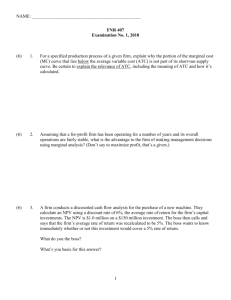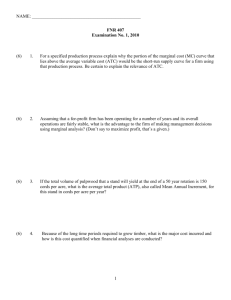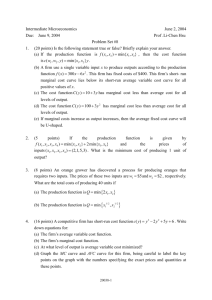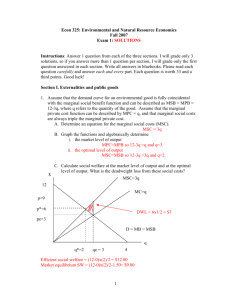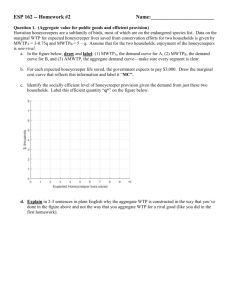ECO424 Homework Key: Efficiency, Externalities, and Sustainability
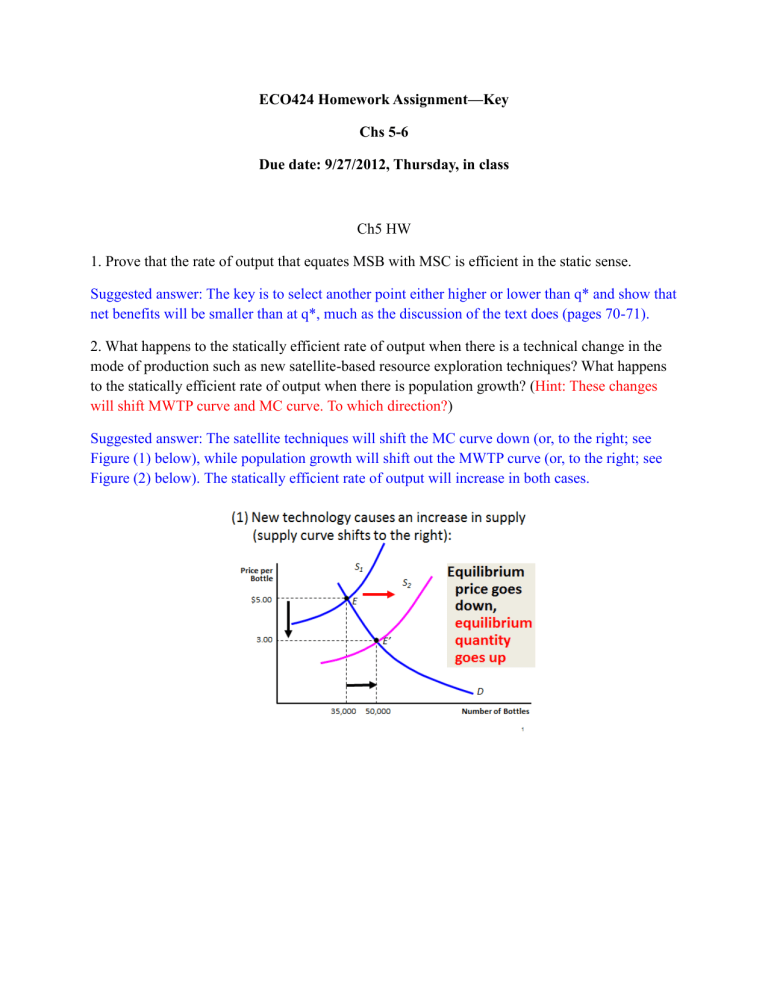
ECO424 Homework Assignment—Key
Chs 5-6
Due date: 9/27/2012, Thursday, in class
Ch5 HW
1. Prove that the rate of output that equates MSB with MSC is efficient in the static sense.
Suggested answer: The key is to select another point either higher or lower than q* and show that net benefits will be smaller than at q*, much as the discussion of the text does (pages 70-71).
2. What happens to the statically efficient rate of output when there is a technical change in the mode of production such as new satellite-based resource exploration techniques? What happens to the statically efficient rate of output when there is population growth? ( Hint: These changes will shift MWTP curve and MC curve. To which direction?
)
Suggested answer: The satellite techniques will shift the MC curve down (or, to the right; see
Figure (1) below), while population growth will shift out the MWTP curve (or, to the right; see
Figure (2) below). The statically efficient rate of output will increase in both cases.
3. A small community has discovered a mineral deposit within its borders. How can the community make its extraction sustainable?
Suggested answer: The community must invest in other natural resource capital (renewable resources) or in productive nonresource capital (human capital and physical capital) sufficient to offset the declining value of the coal stock as it is extracted.
Ch6 HW
1. Using an example to explain the law of increasing marginal production costs.
2. Show that when a positive consumption externality is involved, market output and price tend to be too low relative to socially efficient levels.
3. Roads (except for toll roads) are typically open-access. If rents in this case are defined as the total net gain in travel time saved by using a particular road, then in what sense are the rents dissipated?
1. Suggested answer: The law of increasing marginal production costs (or the law of diminishing marginal returns) states that in all productive processes, adding more of one factor of production, while holding all others constant ("ceteris paribus"), will at some point yield lower per-unit returns.
A common sort of example is adding more workers to a job, such as assembling a car on a factory floor. At some point, adding more workers causes problems such as getting in each other's way, or workers frequently find themselves waiting for access to a part. In all of these processes, producing one more unit of output per unit of time will eventually cost increasingly more, due to inputs being used less and less effectively.
2. Suggested answer: If MPB is the market demand curve and MPC is the market supply curve, p m and q m will be the market-derived values of price and output. If a positive consumption externality is present, the social marginal willingness-to- pay (MWTP) curve is MSB. Socially efficient values of price and output would be p* and q*. p m is smaller than p* , q m is smaller than q*.
3. Suggested answer: As new entrants use the roads, travel times for everybody are increased until travel times are increased to those of the next best alternative route.

